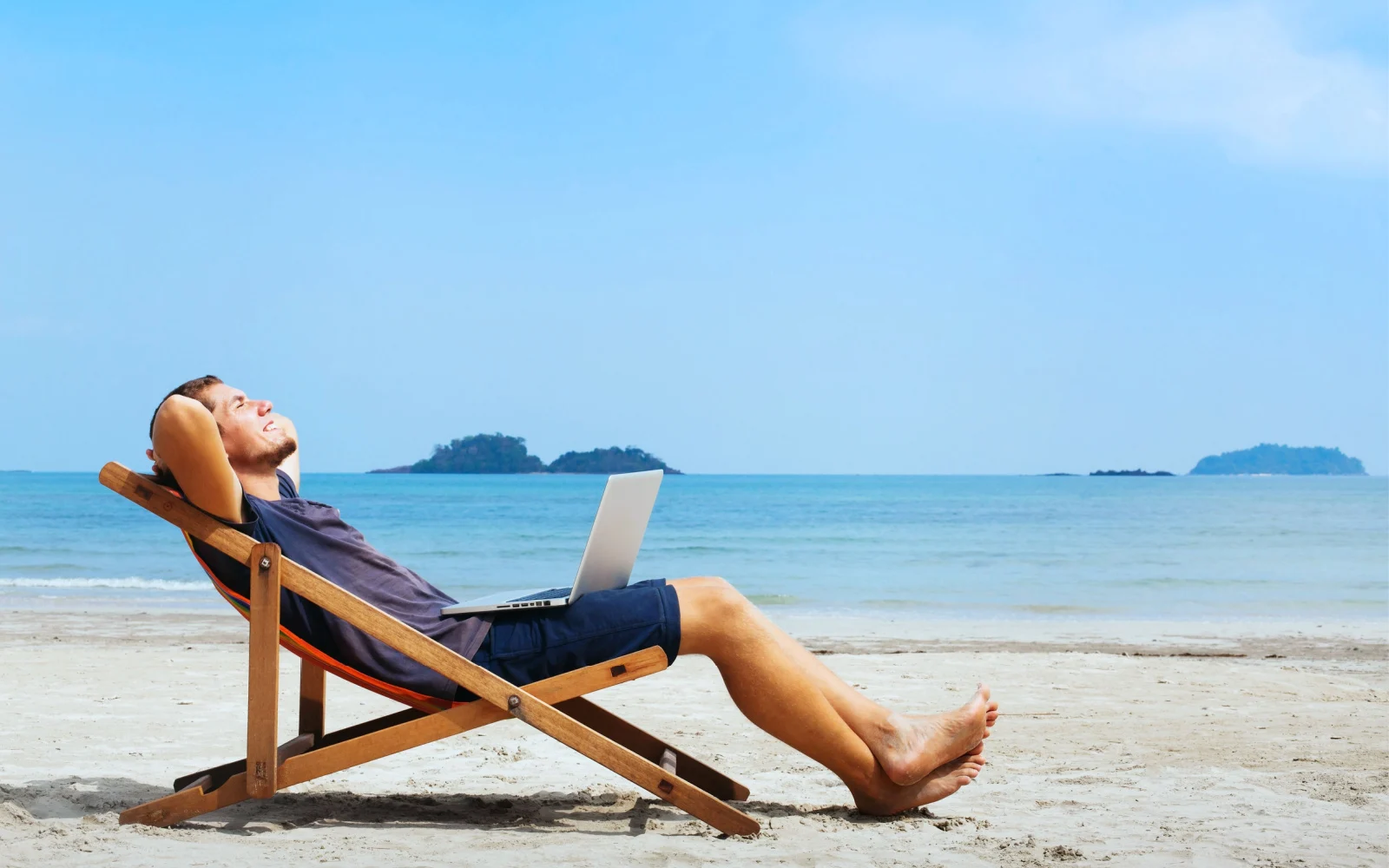The working world is moving toward bleisure travel, a combo of business and leisure travel. We explore what this new trend means for travel and business trips.
Business travelers may visit amazing cities and locations all around the world, but many only see the inside of airports, conference rooms, and hotels while they’re there.
If you’ve ever been to a stunning international or domestic city on a business trip, you understand the frustration of being so close, yet so far.
Enter the combination of business travel and leisure travel: Bleisure travel. First coined as a term in 2009 by consulting firm Future Laboratory, it’s now a widespread concept.
This growing trend allows people traveling for business to incorporate a little more fun and tourism into their trips.
And preliminary studies seem to show the practice is good for productivity, staving off burnout, and improving work-life balance.
Let’s take a close-up look at bleisure travel and what it means for business travel, productivity, and peoples’ relationships with work in a changing world.
What Is Bleisure Travel?
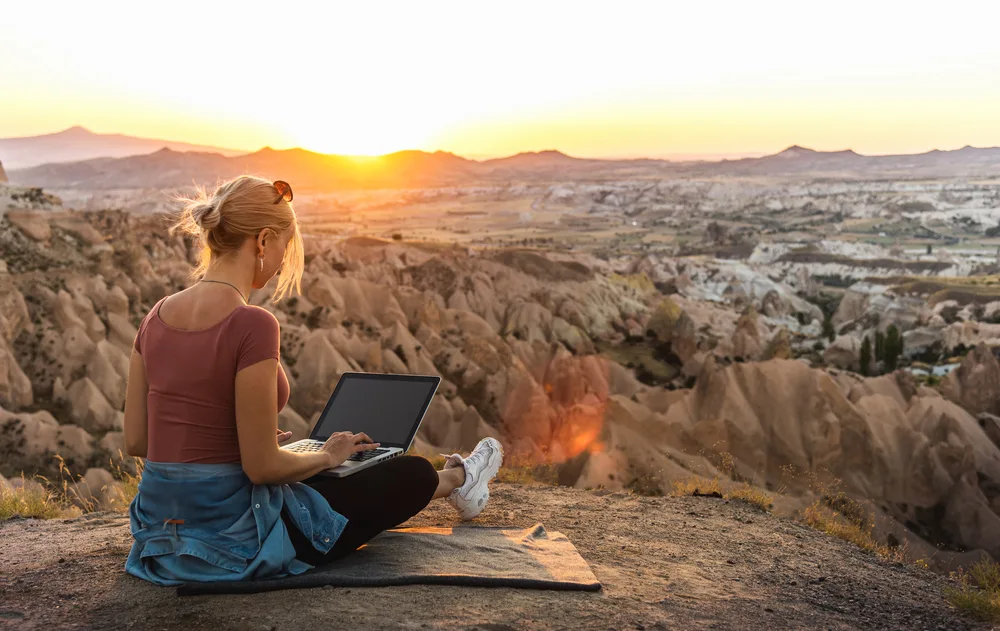
22Images Studio/Shutterstock
Bleisure travel is always the same concept: Combining business + leisure (bleisure) during a trip rather than dedicating it to work or pleasure alone.
To really understand bleisure trips, consider the different ways this type of travel can work:
- Business trips with personal time tacked onto the start/end of the trip
- Remote employees traveling and working from worldwide destinations
- Employees utilizing nights/weekends of work trips for pleasure
- Company retreats combining work, team-building, and tourism
One common scenario of bleisure travel is when regular business travelers tack a few extra days onto an otherwise business-only trip for the purpose of leisure or pleasure.
This might be a salaried, in-office employee taking a 3-day trip to London for business, then using a few vacation days to extend their stay and do some exploring in the city.
Another is when remote workers, hybrid workers, freelancers, or contractors take a trip with the purpose of engaging in both business and pleasure.
This could be a remote employee booking a week-long trip to the Caribbean where they’ll sightsee, swim, and explore in between working throughout the day.
Bleisure travel can refer to a worker making use of the evenings and weekends during a regular business trip for leisure, sightseeing, and checking out restaurants, shops, and bars in the city.
Business trips don’t usually require the worker to be in meetings, calls, or actively working outside of normal working hours.
So more business travelers are taking advantage of their novel surroundings and getting to know the city as a tourist when they’re finished with work for the day.
Finally, bleisure travel can even refer to company retreats and trips that are designed to combine work and play with meetings and work interspersed with team-building, sightseeing, and recreation.
But what is bleisure travel really about? Who pays for it? How many business travelers are doing it? And what kind of effect is it having on productivity overall?
We’ll explore the rise of bleisure travel and the effects it’s having on employees, companies, productivity, and the bottom line.
Bleisure Travel Trends and Statistics in 2024
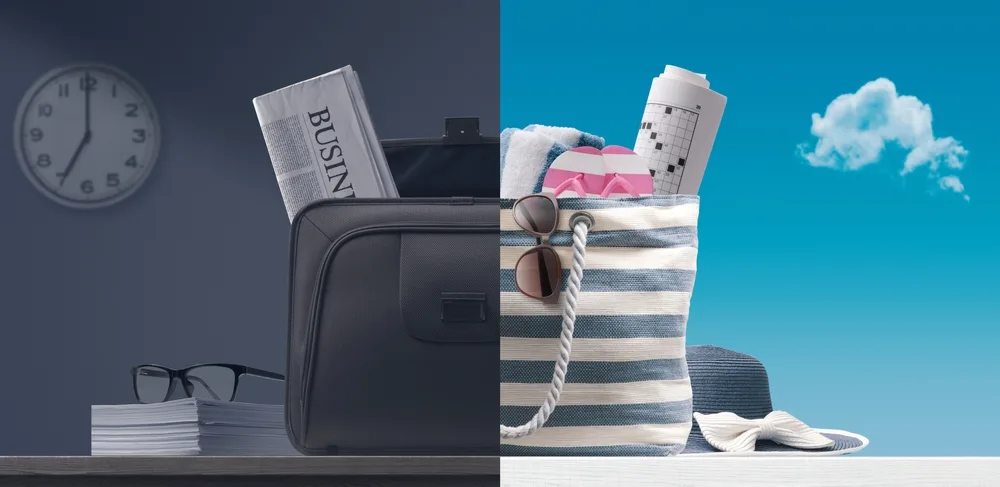
Stokkete/Shutterstock
- Around 33% of business travel worldwide is considered bleisure travel
- About 89% of business travelers plan on adding leisure activities to their trips
- Roughly 83% of business travelers have taken a bleisure trip in the last year
- Around 53% of employers covered the cost of travel for bleisure trips
- Estimated 396 million+ people will travel for business/leisure this year
The bleisure travel and tourism industry is booming, accounting for around 33% of global business travel these days. Experts suggest the industry will reach almost $595 billion in 2023.
About 89% of business travelers want to tack on extra days for leisure travel within the next 12 months, according to the 2022 American Hotel & Lodging Association report.
Consider 89% of the estimated 445 million business trips taken each year – a potential 396 million bleisure travelers.
And that’s not even counting the 35 million+ digital nomads who work from anywhere and love to travel!
It’s clear there’s a huge market for people who want to work a little more pleasure into their, well, work.
Bleisure Traveller magazine found that about 83% of business travelers have taken a bleisure trip in the last year (with about 53% of their employers footing the travel cost bill).
Expedia estimates that about 60% of all business trips evolve into bleisure trips along the way.
In fact, the trend is so strong, it looks like the business trips of old are going away entirely. The idea of flying in for a few meetings and flying directly back home just isn’t as attractive to workers today.
The American Hotel & Lodging Association’s 2022 report called bleisure travel “the new business trip” because of the powerful trends they’re seeing in business hotel bookings.
Why Is Bleisure Travel Becoming So Popular?
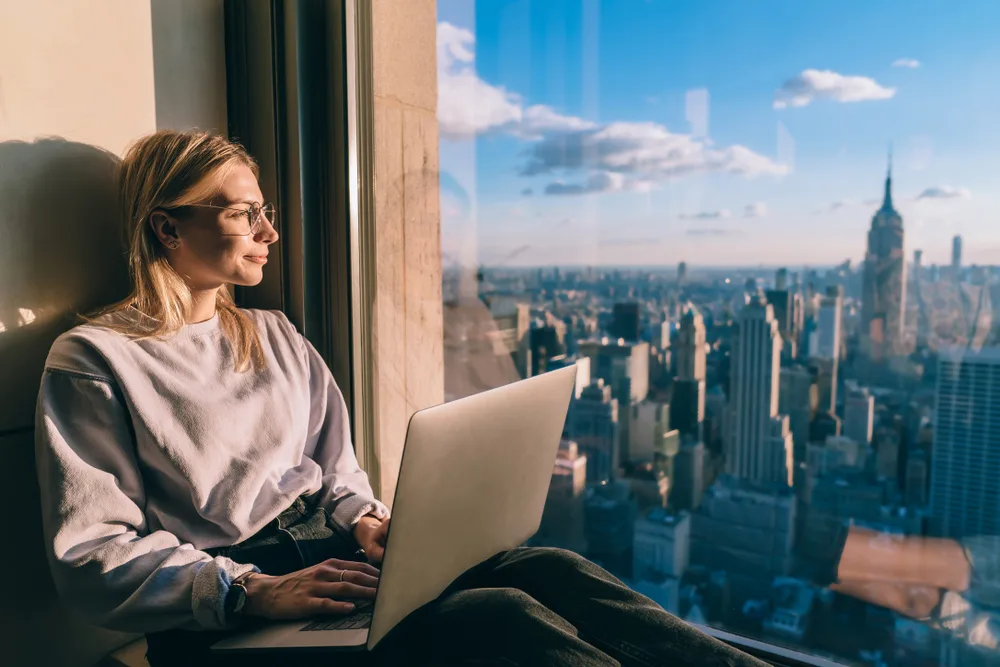
GaudiLab/Shutterstock
The data shows that business/leisure travel is on the rise, but what’s behind this sudden increase? A few things are contributing to the change.
The evolving flexible work models, an increase in hotel and international work spaces, and companies/employees seeking solutions for burnout are all partially responsible for the rise in bleisure travel.
Remote Work and Digital Nomads
When you can work from just about anywhere in the world, it’s easy to turn a strictly-business trip into one that involves sightseeing, tours, and exploring the city.
It’s not just salaried employees that are engaging in more bleisure travel and tourism. Freelancers and digital nomads working remotely also represent a chunk of travelers dividing their trips evenly between business and pleasure.
If you’re able to access suitable spaces where you can work abroad or in domestic cities, it makes sense to turn a business trip into a bleisure trip and get more out of it.
For some, a laptop and internet connection is all that’s needed to make a regular trip into a bleisure trip. For others, special office equipment or dedicated work spaces are needed to take care of business on the road.
More Hotel Work Spaces
Hotels increasingly offer work spaces and conference rooms that directly appeal to business travelers who may stay in a city longer for tourism and pleasure.
With the market growing at an unprecedented rate, more accommodations are creating lounges and workstations that create a solution for business travelers who aren’t limiting their trips to work alone.
While digital nomads might only need an internet connection to work from anywhere in the world, others may need a little more from a hotel or destination work space:
- Internet connectivity
- Quiet or noise reduction
- Comfortable seating and desks
- Essential office equipment/tools
- Others working nearby or private spaces
In fact, hotel and accommodations brands around the world are hearing the call for increased business/leisure combinations in travel loud and clear.
Marriott International created Apartments by Marriott Bonvoy in 2022 as a solution for business travelers seeking to incorporate more leisure and comfort into their trips.
These serviced apartments offer a more homey feel and approach to bleisure trips – living room and full kitchen, bedroom, washer and dryer, and other necessities that make the apartments feel more like home.
Notably, these accommodations options don’t provide some of the “old guard” business trip essentials, like conference rooms, room service meals, and gift shops.
That’s because Marriott (among other hoteliers) is counting on travelers wanting to get out and explore the city for themselves, reducing the need for so many in-house services that business travelers once needed.
Seeking Solutions for Burnout
Harvard Business Review estimates that around 77% of employees have experienced burnout at work. Heavy workloads, poor work0-life balance, and limited autonomy may contribute to burnout.
Since burnout absolutely destroys productivity when unchecked, companies and workers have been on the hunt for solutions that don’t involve just finding a new job (where the cycle often repeats).
Bleisure travel has been an interesting possible solution for burnout, giving workers more autonomy on business trips and chances to incorporate more pleasure and leisure into trips that otherwise are only scheduled for work purposes.
The results so far have been positive with employees and freelancers noting higher satisfaction, better work-life balance, higher engagement, and improved productivity after bleisure trips.
Who Pays for Bleisure Travel?
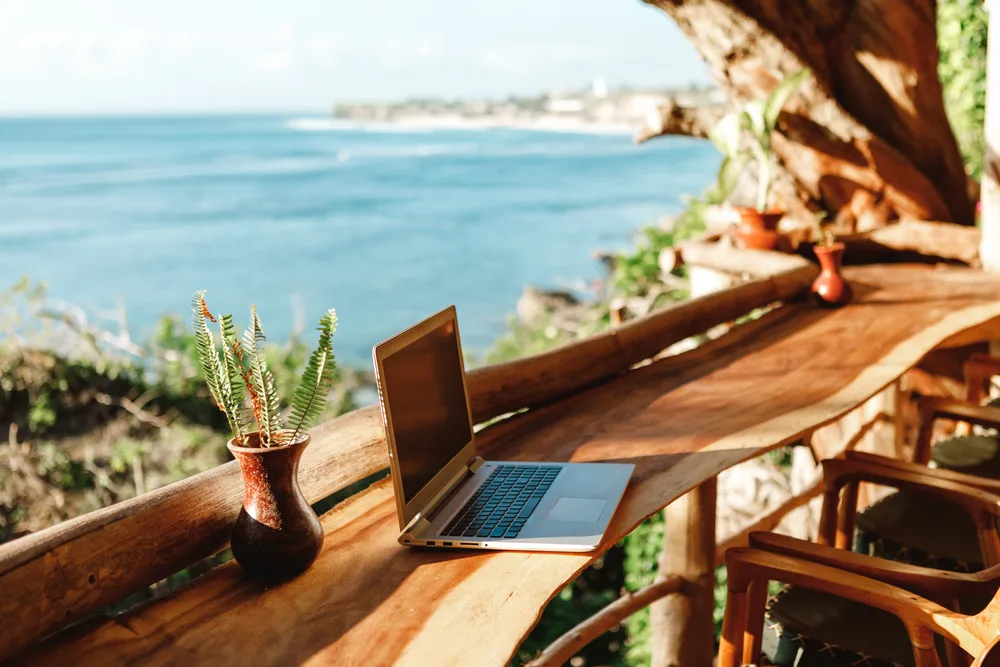
PhotoSunnyDays/Shutterstock
With bleisure trips increasing significantly, who’s footing the bill – the company or the worker? The answer depends on the circumstance.
For salaried employees, the cost of bleisure travel may be split between the company and the employee.
About 53% of employers cover the travel costs for bleisure trips, while around 28% of employees chipped in on travel costs.
The company may pay for the business portion of the trip (travel, hotel, meal expenses, etc.) and the employee may use vacation days and pay out of pocket for the extended leisure portion of the trip (hotel, food, tours, attractions, etc.).
For freelancers and digital nomads, the cost of bleisure travel may be covered by the worker in full.
They’ll get paid for the work completed during the trip, in effect covering a portion or all of the trip’s cost. For many digital nomads, the work they do finances their travel directly.
Things to Consider
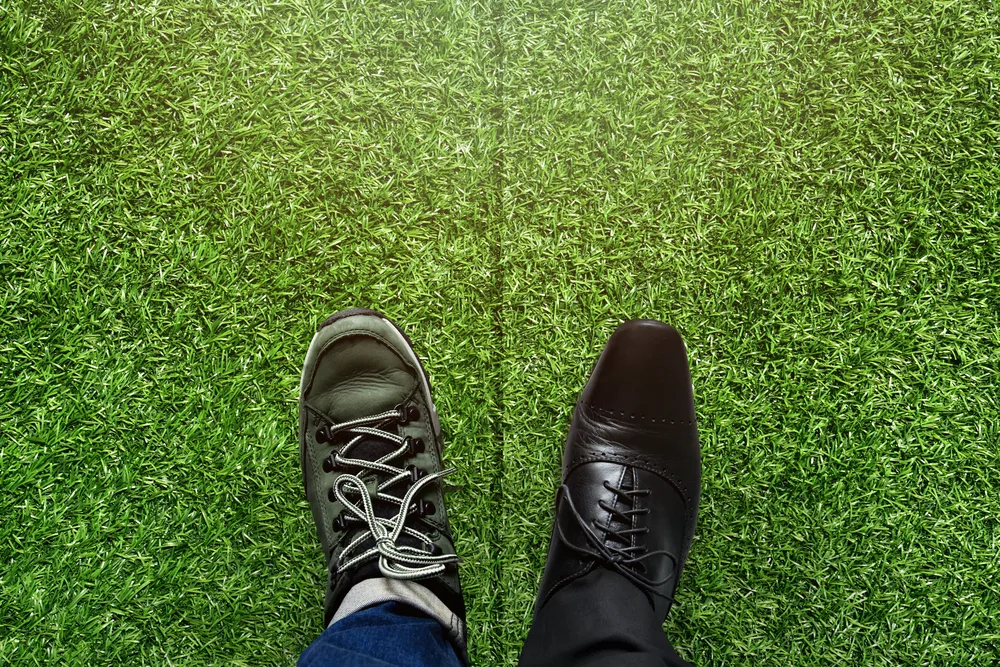
Black Salmon/Shutterstock
Traveling with both business and leisure in mind goes a lot smoother when you have a solid plan in place. Keep these considerations in mind to make your next trip strike the perfect work-life balance!
- Book the right hotel. Look for a conveniently-located hotel that’s close to your meetings and spots you want to check out while you’re out exploring and enjoying the city. If you can find a hotel with dedicated workspaces or private areas where you can get work done with a fast internet connection, it’s even better.
- Do your research. Business travelers usually don’t spend much time researching hotels or looking for reviews and recommendations for things to do (outside of places to take clients for meals and entertainment). As a bleisure traveler, you’ll want to do more research to find the best areas of town to stay in, great places to eat and shop, cool landmarks, and more.
- Know how long you want to stay. If you’re traveling for both business and pleasure, you might only need to add 2-3 days to the start or end of your trip to enjoy the city. Consider using your nights and any weekend days you’re traveling to sightsee and tour, then adding 2 or 3 more days onto the trip to make time for fully exploring the city, enjoying outdoor recreation, or checking out museums, shops, and restaurants.
- Check with your company. If you’re an employee looking to add some leisure to your business trip, your company may be more willing to work with you on costs than you realize. Your company probably won’t mind you taking a few of your paid (leisure) vacation days at the start or end of your trip – if you’re not in the middle of an important, time-sensitive deal. You’ll usually cover the additional hotel nights, meals, and any entertainment for any additional days beyond the business trip.
Frequently Asked Questions
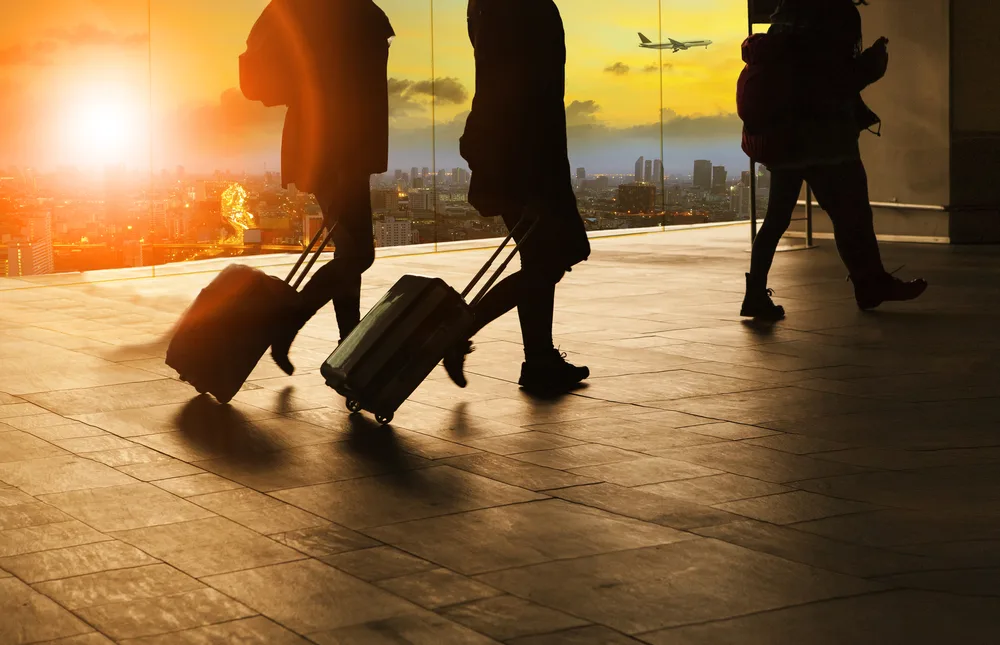
stockphoto mania/Shutterstock
Diving into bleisure travel headfirst is tempting, but take a look at some of the most common questions business travelers have before you start planning activities for your next trip.
What is the concept of bleisure?
The concept of bleisure is blending business and leisure. Bleisure trips or travel refers to making time for work and personal (leisure) time on a business trip.
Bleisure can mean adding days to a business trip for personal enjoyment, using the nights and weekends for leisure and exploring the city, or working remotely from different destinations around the world with time to sightsee and tour in between.
What are the benefits of bleisure?
Bleisure travel benefits workers by improving work-life balance, staving off burnout, making domestic and international leisure travel more attainable, and creating opportunities to see more of the world without taking lots of time off work.
Bleisure travel can also save companies money since workers often travel on cheaper weekdays for this type of travel and choose more affordable hotels so they don’t blow personal budgets during the end of their trip (when they’re covering the nightly cost).
Where does the word bleisure come from?
Bleisure came from the consulting firm Future Laboratory first combining business and leisure in 2009: B + leisure = Bleisure. Business trips that also include separate personal time for touring, sightseeing, and recreation are considered bleisure trips.
Company retreats, remote work, digital nomad lifestyles, and more can all fall under the bleisure travel umbrella.
What is the meaning of the combined term bleisure in the tourism industry?
In the tourism industry, bleisure is a combined term from the words “business” and “leisure” -- the 2 general types of travelers that the tourism and hospitality industry serves.
Business travelers are increasingly taking on more leisure time and personal tourism pursuits during their trips, coining the term “bleisure” to describe this overlap.
What is business leisure travel called?
Business leisure travel is usually called bleisure travel, but some call it a workation (work + vacation). The idea is traveling with the intent of working and making time for personal activities outside of working hours.
Turn Your Next Business Trip Into Bleisure Travel
If banishing burnout, improving your work-life balance, and boosting productivity sounds good to you, a little bleisure travel is exactly what you need.
By turning your next business trip into a getaway (at least part of the time), you’ll get the chance to see more of the world without booking purely personal trips that eat up weeks of your vacation at a time.
You’ll attend the same meetings, hit the same deadlines, and make the same deals on your trip — but all with the promise of a few days to unwind, see the city, enjoy some scenic beauty, and take some time for you.
Talk to your company about the policy for bleisure travel, research some great hotels and sights in the city you’re visiting, and get ready to enjoy your next business trip a lot more!



